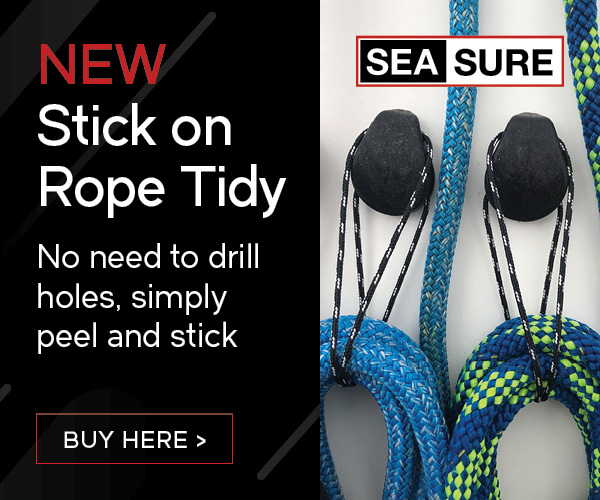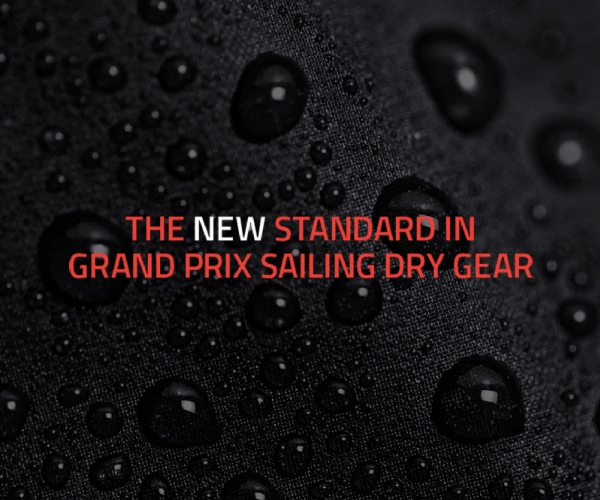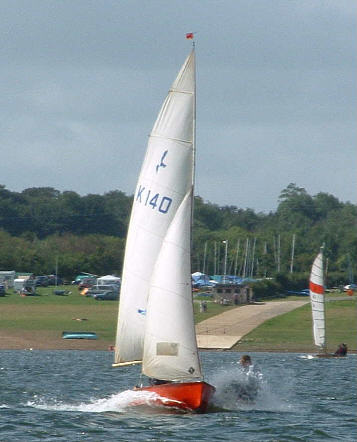












Boats for sale
| Laser 28 - Excellent example of this great design Hamble le rice |
 |
| Laser 161752 Tynemouth |
 |
| Laser 140101 Tynemouth |
 |
List classes of boat for sale |
David Henshall's article |
Post Reply 
|
Page <1 45678 12> |
| Author | |
Do Different 
Really should get out more 
Joined: 26 Jan 12 Location: North Online Status: Offline Posts: 1312 |
 Post Options Post Options
 Quote Quote  Reply Reply
 Topic: David Henshall's article Topic: David Henshall's articlePosted: 20 Dec 14 at 1:26pm |
|
Liking it Riv; I can certainly see the point Prof. Pye is making.
Interesting, how perfection is perceived. I have bought items that even though made in a factory to precise standards I am sometimes frustrated by poor design. I guess I am a tinkerer at heart. Probably why my No.1 boat is a Class with considerable freedom over a SMOD.
Edited by Do Different - 20 Dec 14 at 1:28pm |
|
 |
|
Rupert 
Really should get out more 
Joined: 11 Aug 04 Location: Whitefriars sc Online Status: Offline Posts: 8956 |
 Post Options Post Options
 Quote Quote  Reply Reply
 Posted: 20 Dec 14 at 4:18pm Posted: 20 Dec 14 at 4:18pm |
|
So much food for thought on here. I trained as a boat builder, but having not done any major jobs for quite a few years, I certainly worry whether I can actually remember how to do stuff properly, so I can see for someone starting from scratch, the pressure could be pretty huge.
Over at the cvrda, we do of course see a lot of people (usually, but not always, in the "prime of life") restoring an old boat. Some worry that what they do won't be showroom style - and I think they always get the reply that it really doesn't matter - the point is to have a boat you can sail at the end of a process that you have enjoyed. 50 years ago these same people would probably have built a kit, but now there are so many old boats around, and very cheap, why start from new - a restoration can throw up a much more varied problem solving set. |
|
|
Firefly 2324, Puffin 229, Minisail 3446 Mirror 70686
|
|
 |
|
turnturtle 
Really should get out more 
Joined: 05 Dec 14 Online Status: Offline Posts: 2538 |
 Post Options Post Options
 Quote Quote  Reply Reply
 Posted: 20 Dec 14 at 4:59pm Posted: 20 Dec 14 at 4:59pm |
|
Surely not every restoration need be a work of art - I'm time poor right now, but I could quite imagine restoring a boat, especially if done at a local men's shed, could be a thoroughly rewarding process. Despite the derision on here, there really is something quite beautiful about those penny stocking cherubs that used to feature on these pages before it became simply a discussion board for the next best SMOD and its nearest rival.
|
|
 |
|
Rupert 
Really should get out more 
Joined: 11 Aug 04 Location: Whitefriars sc Online Status: Offline Posts: 8956 |
 Post Options Post Options
 Quote Quote  Reply Reply
 Posted: 20 Dec 14 at 5:10pm Posted: 20 Dec 14 at 5:10pm |
|
I'd say the vast majority of restorations SHOULDN'T be works of art. There will always be people for whom the aim is to spend years painstakingly building something, but for those who simply want a winter passtime that leads to sailing in the spring, you shouldn't get too bogged down in the detail, and should accept that perfection isn't needed and can even be a bad thing - you won't want to sail it in case you get damage, you won't want to let anyone else sail it, you'll cry if someone bumps into it.
I too like the Cherub way of thinking (bodge it together, make it go fast till it breaks, then bodge again), and more discussions on here would be good. |
|
|
Firefly 2324, Puffin 229, Minisail 3446 Mirror 70686
|
|
 |
|
Dougaldog 
Far too distracted from work 
Joined: 05 Nov 10 Location: hamble Online Status: Offline Posts: 356 |
 Post Options Post Options
 Quote Quote  Reply Reply
 Posted: 20 Dec 14 at 5:34pm Posted: 20 Dec 14 at 5:34pm |
|
Rupert and TT - spot on! What is more, you can get a great deal of 'bang for your buck' - with not a lot in the way of depreciation. It is not just the development classes, for you can pick up reasonable Contenders, Fireballs, Scorpions and have a lot of fun for not a lot of outlay. Most important of all? It gets people engaged again with the sport, which has to be a good thing. If you recall, back in the summer I did a feature on here that focused on the classic Finn scene - and how the classic lowrider Int Moths were really finding their feet as an active group. Since that article more and more classic lowriders have surfaced and I am pretty confident that they will be seen out next summer. It would be easy to sneer at both fleets, yet from close observation of them out sailing, there is one clear plus point that you just cannot ignore; all the people sailing in these fleets are noted for having FUN!
D |
|
|
Dougal H
|
|
 |
|
rogerd 
Really should get out more 

Joined: 25 May 04 Online Status: Offline Posts: 1076 |
 Post Options Post Options
 Quote Quote  Reply Reply
 Posted: 20 Dec 14 at 7:26pm Posted: 20 Dec 14 at 7:26pm |
|
A few years ago a couple of chaps turned up at the cvrda event at Bough Beech with a Hornet that had been in storage for many years. They sailed it on the Saturday broke something went home bodged it back together to race on the Sunday. Their comment was that it was like old times you would break something at an event and put it back together so you could sail again next day. I am pleased to hear that spirit lives on in the Cherub fleet.
|
|
 |
|
Chris 249 
Really should get out more 

Joined: 10 May 04 Online Status: Offline Posts: 2041 |
 Post Options Post Options
 Quote Quote  Reply Reply
 Posted: 20 Dec 14 at 8:21pm Posted: 20 Dec 14 at 8:21pm |
I'd never heard of David Pye but it sounds like he has some fascinating ideas and wrote some books worth buying - thanks for the tip-off! The pressure to be perfect is something I really notice in relation to the slow upgrade of my scruffy old yacht. Reading Classic Boat is an inspiration, but it's also a turn off because even if I had the skills to achieve such standards, it wouldn't be a worthwhile use of time and money. I'm heartened to see the views expressed here, and it really makes me think I should just finish the re-doing of the 1964 Canoe and get it back out sailing; it's been sitting in the shed for years while at least the yacht is still sailing. One also has to wonder whether the pressure to make objects d art (sp) is restricting the development process more than the old style idea of just chucking something together to see if the shape works. One safety valve I've found is the use of recycled wood, often from floorboards; it allows you to use magnificent timbers that are no longer easily obtained (or obtainable at all, in the case of our best dinghy-building timber) and the fact that there's going to be old nail holes and dents can hide my mistakes, or at least take the emphasis off them. I tell people I'm not a bad workman, I'm just on a mission to bring shabby chic and the distressed look to sailing.
Edited by Chris 249 - 20 Dec 14 at 8:37pm |
|
 |
|
rogerd 
Really should get out more 

Joined: 25 May 04 Online Status: Offline Posts: 1076 |
 Post Options Post Options
 Quote Quote  Reply Reply
 Posted: 20 Dec 14 at 9:08pm Posted: 20 Dec 14 at 9:08pm |
|
I am of the view, as are many cvrda members, that an old boat will have battle scars and are part of her history. A fifty year old boat will have some tales to tell so let her tell them with her bumps and dings and get out there sailing.
|
|
 |
|
Chris 249 
Really should get out more 

Joined: 10 May 04 Online Status: Offline Posts: 2041 |
 Post Options Post Options
 Quote Quote  Reply Reply
 Posted: 20 Dec 14 at 9:10pm Posted: 20 Dec 14 at 9:10pm |
|
On a different note, if I may, about the same article; David, you point out that there's a major difference between Continental and British fleets. Do you know whether the sport is stronger (at least in terms of the way the numbers are holding up over time) in areas where they are following the Continental approach (which seems to be one of sticking to established classes more) than it is in the UK?
I've done almost no sailing in Europe but last year I came across the astonishing sailing scene on the Alster, a tiny lake in Hamburg. The lake's circumference is about 6.5km but inside that space there are some 50 active Dragons, several clubs including at least one gingerbread palace, marinas that house up to 50 of one type of small, slow dinghy alone, and big fleets of sailing dinghies for hire. Interestingly, there was an extreme emphasis on traditional styles; even most of the hire boats appeared to be traditional Zugvogels (?), which are like a 12 Sq Metre Sharpie. There were also some lovely classics, like the amazingly long and low Z Jollen (sort of like a streamlined Rater) and an O-Jolle (predecessor of the Finn) which had been in the same family for something like 60 years. In many ways, the Alster appeared to be the most vibrant sailing scene I have ever come across, and yet apart from the many Lasers and Optis, a very small number of cats and many Congers, just about everyone was sailing a boat that would have been old hat in the sixties. Maybe it's just a German thing, but even if that's the case then perhaps the lesson is that what we sail has to vary according to the locale and its culture.
|
|
 |
|
Dougaldog 
Far too distracted from work 
Joined: 05 Nov 10 Location: hamble Online Status: Offline Posts: 356 |
 Post Options Post Options
 Quote Quote  Reply Reply
 Posted: 20 Dec 14 at 9:55pm Posted: 20 Dec 14 at 9:55pm |
|
Chris, One thing is for certain! Germany is one of the great powerhouses of International sailing. They have long replaced the UK as the spiritual home of the 505, ditto the Contender. Go south and you'll find great fleets of 470s - not to mentions Tornados, FDs, OKs and other international classes. And, as you noted, there is a lot going on in their stable domestic scene, boats like the Pirat and Korsar. Maybe the answer is in that one word - stable! But if you think that Germany has cracked the path to International success, just head up and across to Denmark and you can find an even more focused approach. Have they got a different mentality regarding the structure of the sport? I think so and if you look at the results, you'd have to say that they achieve more with less. After the 2012 Olympic Regatta finished, I hosted the Chair of Selectors for a small but successful sailing nation as he waited for his flight home. I took him down around Hamble and showed him the Office 'complex' that is the powerbase for the RYA. He was dumfounded that leisure boating should need such a large set of palatial premises. Maybe that is part of the problem, that running the sport has become more important than the activity that they are there to support. But in some ways you are so right with your observations! Twice this year I've been caught on the hop; the first time was at the excellent classic event at Hunts, when the Ian Proctor designed ST (for Sunday Times) dinghies turned up. I was expecting a couple of boats but they kept arriving. That is one happy class that, like the British Moth, continues to occupy a niche but below the radar for most of the more vocal observers. The second time was when I was a guest at the Miracle Nationals - similar thinking to when I was at Hunts but again I was wrong. This is a fleet that happily pulls in more than 40 boats for most of their Nationals; the bottom line is that they just get on with their sailing and having fun! The more you look at things, the more you start to think that stability is really where it is at; classes like the Solo and Merlin Rocket have been around for decades, yet continue to thrive no matter what new classes try to threaten their position. I was at Salcombe this summer, covering Merlin week there. So many of the sailors I spoke to said that this was their 15th week (relative newcomers, many had already had their Silver Anniversary of weeks). And this is what it is all about; these classes where stability is a given also seems to be the classes where the fun is to be had!
D Edited by Dougaldog - 20 Dec 14 at 9:58pm |
|
|
Dougal H
|
|
 |
|
Post Reply 
|
Page <1 45678 12> |
| Forum Jump | Forum Permissions  You cannot post new topics in this forum You cannot reply to topics in this forum You cannot delete your posts in this forum You cannot edit your posts in this forum You cannot create polls in this forum You cannot vote in polls in this forum |
Bulletin Board Software by Web Wiz Forums® version 9.665y
Copyright ©2001-2010 Web Wiz
Change your personal settings, or read our privacy policy
Copyright ©2001-2010 Web Wiz
Change your personal settings, or read our privacy policy











 Printable Version
Printable Version Delicious
Delicious Digg
Digg Facebook
Facebook Furl
Furl Google
Google MySpace
MySpace Newsvine
Newsvine reddit
reddit StumbleUpon
StumbleUpon Twitter
Twitter Windows Live
Windows Live Yahoo Bookmarks
Yahoo Bookmarks Topic Options
Topic Options